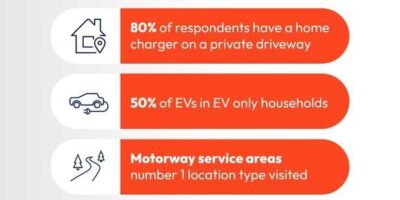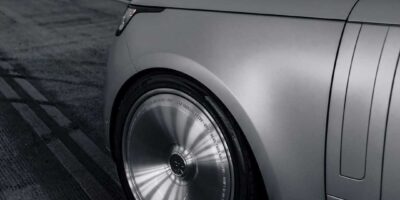HPI, part of Solera Holdings, Inc., a global leader in risk and asset management data and software solutions for the insurance and automotive industries, is urging drivers, businesses and service operators of larger vehicles weighing 3.5 tonnes and above to check to see how incoming Low Emission Zone (LEZ) changes will impact them.
From October 2020, changes to the existing LEZ will mean that 4×4 pick-ups and caravans will join HGVs, coaches and buses as part of a range of larger vehicles that will need to meet new stringent emissions criteria to enter and operate within the M25.
HPI is helping drivers of 4 x 4s, pick-up trucks, motorised horseboxes and motor caravans prepare themselves from being unwittingly penalised for driving a vehicle within or exceeding designated weight restriction levels.* The first Ultra Low Emission Zone (ULEZ) came into force in London in April 2019 and is part of an environmental strategy the Mayor of London is driving to clean up London’s toxic air.
HPI’s free online tool allows users to check the Euro emissions rating of their cars and LCVs up to and including Euro 6 standard, and helps them understand how they are impacted by driving in London’s ULEZ. The tool can help motorists identify which vehicles will need to meet Euro 6 standards or be liable to pay a daily charge to drive within the Greater London area.
In the past five months alone HPI has already helped over 53,000 drivers and can support many more around the UK who will be affected by the rollout of clean air zones across British cities.
Of the vehicles checked by the tool in the past five months, the following vehicle types have been checked most often:
Euro 6Â – 44.6%
Euro 5 – 41.1%
Euro 4 – 11.3%
Euro 3, Euro 2 and Euro 1 amount to 3% of the total
This equates to around 350 checks per day or over 2,400 per week.
Current LEZ emissions standards set a limit for how much particulate matter a vehicle may emit. The tougher standards will also set a limit for nitrogen oxides (NOx) for some vehicles.
Following the launch of the UK’s first ULEZ in London, numerous Clean Air Zones (CAZs) are being implemented across UK cities. The five cities required to introduce a Clean Air Zone are Birmingham, Derby, Leeds, Nottingham and Southampton. The Government regulations aim to bring nitrogen dioxide levels within the legal limit in the shortest possible time and by 2021 at the latest, and has also named 23 local authorities where it expects pollution levels to reach illegal levels by 2021. They must all carry out a feasibility study to determine whether a Clean Air Zone is required.
Drivers who enter the capital in vehicles which do not comply with the new emissions will be subject to a £12.50 fee on top of the £11.50 congestion charge. Charges apply once in every 24-hour period (midnight to midnight) when entering or driving in the zone. This would apply seven days a week, 365 days a year.
Fernando Garcia, consumer director at HPI said: “In addition to the existing LEZ emissions standards operating across most of Greater London, a phased implementation of tougher emissions standards will affect different vehicle types and different geographical areas within London. Now is the time to check and take the necessary steps to avoid incurring penalties later in the year as there is margin for drivers of certain vehicles to be caught out especially with different vehicle weights.
“Over the next 12-18 months drivers will face lots of changes as a result of the implementation of Government clean air strategies. Our online check is completely free and allows motorists to check the emissions standard of their vehicle upto and including Euro 6 and potentially avoid a fine.â€
Check your vehicle’s Euro Emission Standard here: https://www.hpi.co.uk/content/newsroom/the-future-of-diesel/euro-emission-standards-explained/
Euro emissions standards explained:
Euro 1 -July 1992 (Jan 1993). From here on all cars had to have a catalytic converter and run on unleaded petrol to cut carbon monoxide emissions
Euro 2- Jan 1996 (Jan 1997). The limits were cut for carbon monoxide, unburned hydrocarbons and oxides of nitrogen, with different emission limits for petrol and diesel
Euro 3 – Jan 2000 (Jan 2001). Carbon monoxide and diesel particulate limits were reduced and there were separate HC and NOx limits for petrol engines
Euro 4 – Jan 2005 (Jan 2006). Focus on cleaning up emissions from diesel cars, especially particulate matter and nitrogen oxides
Euro 5 – Sept 2009 (Jan 2011). Particulate emissions for diesel cut. Filters required, NOx limits reduced by 28%. Particulates limit for direct injection petrol engines. Particulate emissions cut further on all diesels approved after Sept 2011.
Euro 6 – Sept 2014 (Sept 2015). A big reduction in NOx emissions from diesels (67% compared with Euro 5), with petrol and diesel cars now having to comply with the same rules.
For more information, please visit https://www.hpi.co.uk/
*Article Source https://www.hpi.co.uk/








